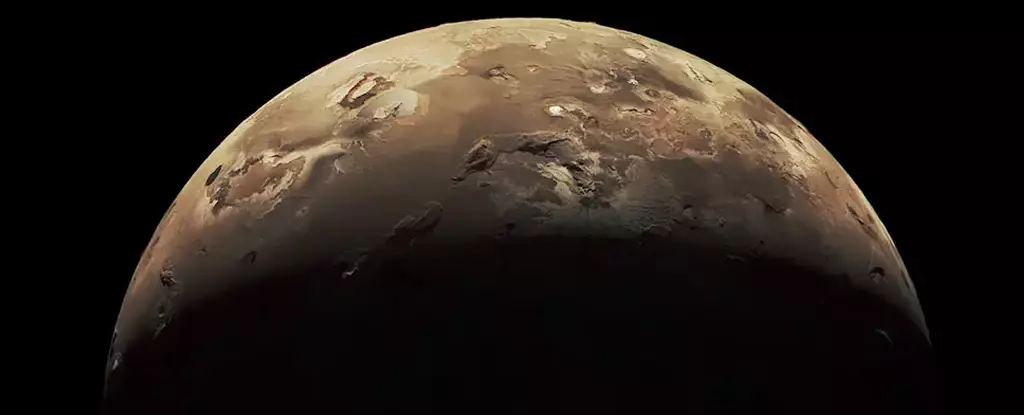NASA’s Juno spacecraft achieved a monumental feat on Saturday as it captured detailed images of Io, the most volcanically active world in our Solar System. This close fly-by provided an extraordinary opportunity to witness plumes of volcanic activity erupting from Io’s surface in real-time. Representing humanity’s closest encounters with Io over the past two decades, Juno surveyed the moon from a distance of approximately 930 miles during this two-part close fly-by. The findings from this mission serve to deepen our understanding of the fiery phenomena that lie beneath the tortured moon’s surface.
Io, often referred to as a “tortured moon,” is constantly subjected to the relentless push and pull of gravitational forces. On one end, Jupiter’s colossal mass exerts a herculean tug on Io, while on the other end, its neighboring moons Europa and Ganymede exert their own gravitational influence. NASA’s Juno mission Principal Investigator, Scott Bolton, aptly describes this intricate dance as a gravitational tug-of-war. As a consequence, the constant friction generated from these competing forces engenders a heating process within Io, ultimately giving birth to its remarkable volcanic activity.
With approximately 400 active volcanoes dotting its surface, Io stands as a celestial spectacle in its own right. While Io itself is only slightly larger than Earth’s moon, its volcanoes dwarf anything found on our home planet. These colossal volcanic formations have the capacity to unleash fountains of boiling-hot lava that can ascend dozens of miles into the air, defying our expectations. For instance, Loki Patera, the largest volcano on Io, boasts a size roughly twice that of Mauna Loa, Earth’s most massive active volcano.
Since 2016, the Juno spacecraft has faithfully orbited Jupiter every 38 days, providing unprecedented insights into the largest planet in the Solar System. In its extended mission phase, Juno is set to explore the entirety of the Jovian system, encompassing not just Jupiter itself but also its rings and moons, until September 2025. Through these fly-bys, experts from the Juno mission hope to acquire a more comprehensive and intricate understanding of the driving forces behind Io’s explosive volcanic phenomena.
As scientists grapple with the intricacies of Io’s volcanic activity, two competing theories have emerged. The first posits that Io’s intense volcanism results from the presence of a global magma ocean lurking beneath its surface. The alternative theory argues that the moon’s solid core of hot metal serves as the catalyst. It is in the coming months, as scientists meticulously examine the data gathered by Juno, that we may finally unlock the answer to this captivating enigma – Io’s volcanic secrets.
NASA’s Juno spacecraft, through its close encounter with Io, has gifted humanity with awe-inspiring images and vital data regarding the moon’s volcanic activity. By penetrating the intricate gravitational dance and unraveling the secrets hidden within Io’s tortured surface, Juno has accelerated our understanding of the fiery world within our Solar System. With each passing discovery, we inch closer to comprehending the inner workings of Io’s enigmatic volcanoes and further illuminate the beauty and mystery that lies beyond Earth’s realm.


Leave a Reply